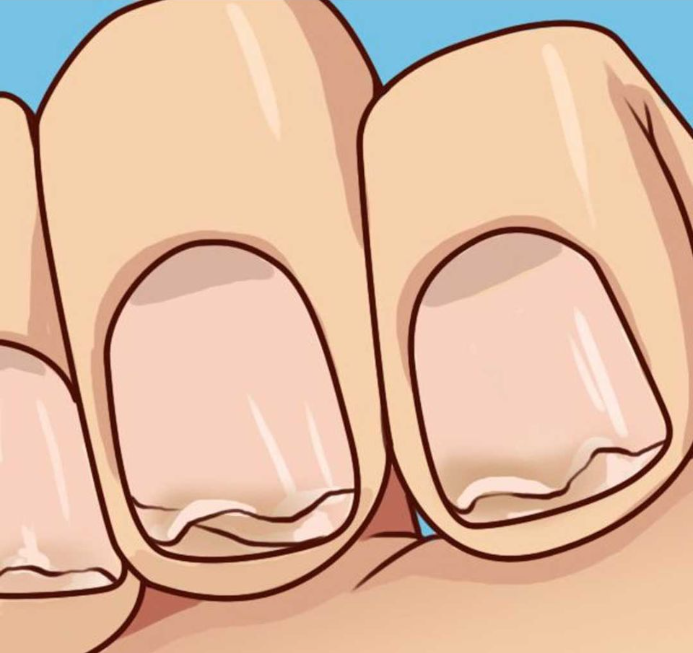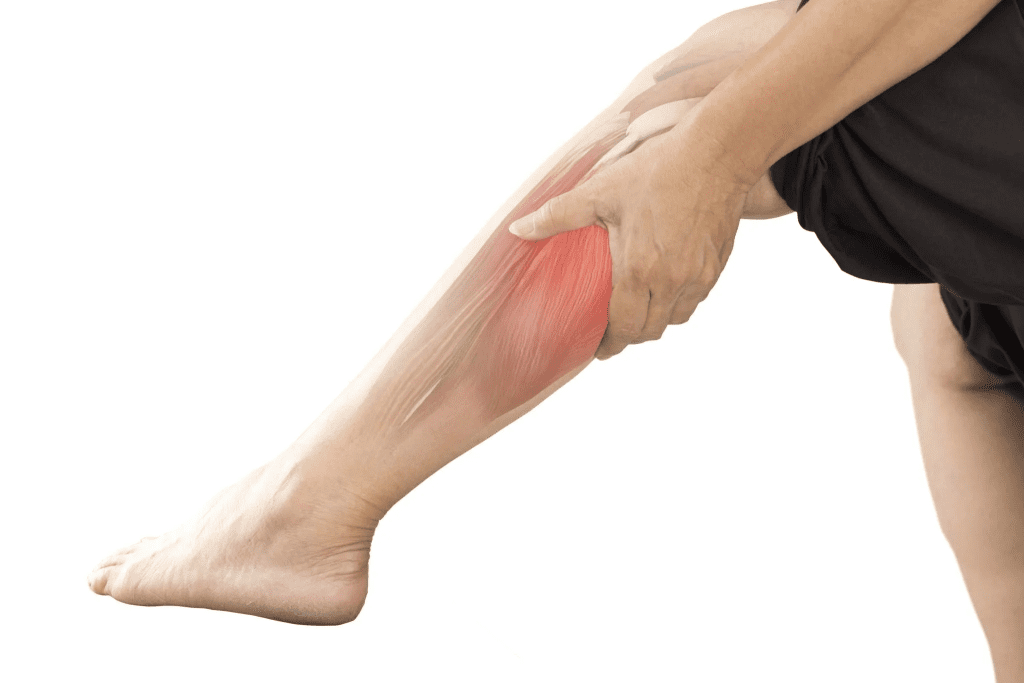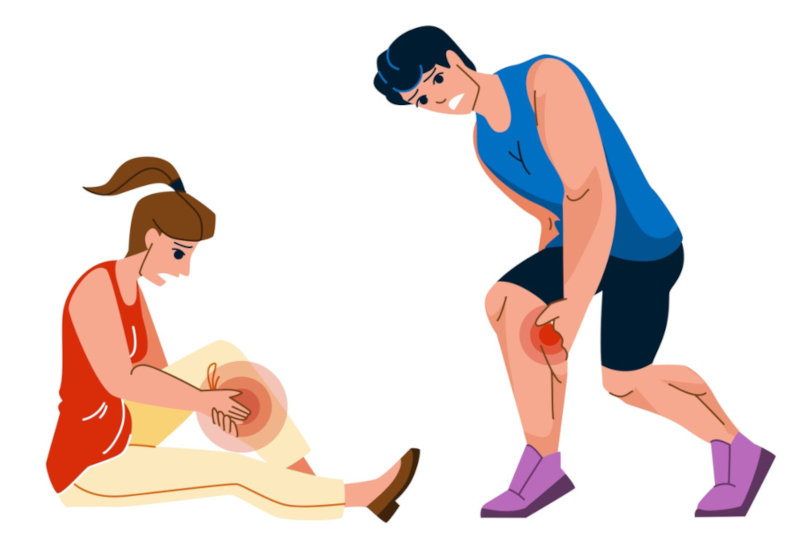Weak nails and frequent leg cramps can be bothersome, affecting your day-to-day comfort and even signaling potential health issues. Weak nails may chip, break, or peel easily, while leg cramps can strike suddenly, causing intense muscle pain and leaving you frustrated. Understanding the underlying causes of these symptoms and learning how to address them can lead to healthier nails, stronger muscles, and an overall improved sense of well-being.
What Causes Weak Nails?

Weak nails can be caused by several factors, ranging from everyday habits to nutritional deficiencies. Let’s explore the main culprits behind brittle and fragile nails.
1. Nutritional Deficiencies
Nails need certain nutrients to stay strong and healthy. Deficiencies in biotin, iron, zinc, and vitamins A, C, and E can all contribute to weak nails. Without these key nutrients, nails are more likely to become thin, brittle, and prone to breaking.
2. Harsh Chemicals and Moisture Exposure
Frequent exposure to water and harsh chemicals, such as those in some cleaning products or nail polish removers, can weaken nails over time. Excessive moisture strips the nails of their natural oils, while chemicals can dry them out, leaving them fragile and prone to splitting.
3. Underlying Health Conditions
Certain health conditions, like hypothyroidism, psoriasis, and anemia, can also contribute to weak nails. If you have an ongoing issue with fragile nails that doesn’t seem to improve with proper nail care, it may be worth discussing with a healthcare provider.
Signs of Weak Nails
Wondering if your nails are telling you something about your health? Here are the key signs to look out for:
- Brittleness: Nails that break or split easily.
- Slow Growth: If your nails seem to grow slower than usual, it could signal an issue.
- Ridges and Discoloration: Vertical ridges, discoloration, and pale nails may indicate a need for better nutrition or a medical evaluation.
- Softness: Soft nails that bend easily are also a common sign of weakness.
If you’re noticing these symptoms frequently, it may be time to consider possible causes and solutions.
Common Causes of Frequent Leg Cramps
Leg cramps can have various triggers, but here are some of the most common causes to help you understand why they might be happening to you:
1. Dehydration
When you’re dehydrated, your muscles are more prone to cramping. Without enough water, your muscles may become stiff and are unable to relax properly, leading to painful cramps.
2. Electrolyte Imbalances
Electrolytes, including potassium, calcium, and magnesium, play a crucial role in muscle function. When your body lacks these essential minerals, it can lead to frequent cramps, particularly in the legs.
3. Muscle Fatigue and Poor Circulation

Overworking your muscles, whether from exercise or prolonged periods of standing, can lead to muscle fatigue and cramping. Poor circulation can also contribute, as your muscles may not be getting the blood flow they need to function correctly.
4. Certain Medications and Medical Conditions
Medications like diuretics, as well as medical conditions like diabetes, peripheral artery disease, and nerve compression, can also cause leg cramps. If you’re frequently experiencing cramps, speak with a healthcare provider to rule out underlying issues.
Symptoms of Frequent Leg Cramps
Leg cramps can vary in intensity, but here’s what you might experience:
- Sudden, Sharp Pain: This pain can occur in the calf, thigh, or foot and may last anywhere from a few seconds to several minutes.
- Muscle Tightness: After the cramp subsides, you might feel a knot-like sensation in the affected muscle.
- Soreness: The area may feel tender and sore for hours or even days following a severe cramp.
If your cramps are frequent and intense, understanding these symptoms can help you identify potential solutions.
How to Address Nutritional Deficiencies for Better Nail Health and Muscle Function

To support nail health and prevent leg cramps, it’s crucial to maintain a balanced diet rich in essential nutrients. Here’s how:
1. Include Biotin-Rich Foods for Nail Strength
Biotin is essential for healthy nails. Foods like eggs, nuts, and legumes are great sources of biotin and can help strengthen weak nails over time.
2. Get Plenty of Iron and Zinc
Iron and zinc deficiencies are common contributors to weak nails. Incorporate foods like spinach, red meat, and pumpkin seeds into your diet to boost your iron and zinc intake.
3. Maintain Electrolyte Balance
To prevent leg cramps, ensure you’re getting enough potassium, calcium, and magnesium. Bananas, leafy greens, and dairy products are rich in these electrolytes and can help keep your muscles functioning properly.
4. Hydrate Properly
Adequate hydration is crucial for both nail and muscle health. Aim to drink at least eight glasses of water per day, and more if you’re active or exposed to hot weather.
The Role of Exercise in Preventing Leg Cramps

Regular exercise plays a significant role in preventing leg cramps by improving muscle flexibility and circulation. Here’s what you can do:
- Stretching Exercises: Incorporating stretching into your routine can reduce the frequency and severity of cramps. Activities like yoga and Pilates are great for improving flexibility.
- Warm-Up and Cool Down: Always warm up before exercising and cool down afterward. This helps prepare your muscles for activity and prevents muscle strain.
Supplements for Weak Nails and Leg Cramps
If dietary changes aren’t enough, supplements can offer additional support. Here are a few to consider:
- Biotin: This supplement can help strengthen nails and improve their texture.
- Magnesium and Potassium: These are excellent for muscle health and can help reduce cramping.
- Iron and Zinc: If you’re deficient in these minerals, supplements can support nail health.
Before starting any new supplement, be sure to consult with a healthcare provider to ensure it’s right for you.
When to Seek Medical Advice

If weak nails or leg cramps persist despite making lifestyle changes, it’s essential to seek professional guidance. A healthcare provider can help identify any underlying conditions and recommend appropriate treatment. If your symptoms are severe, painful, or accompanied by other unusual signs, don’t hesitate to reach out for medical assistance.
Conclusion
Weak nails and frequent leg cramps may seem like minor issues, but they can indicate nutritional deficiencies or other health concerns. By understanding the causes, incorporating dietary and lifestyle changes, and seeking medical advice when needed, you can improve your nail health and reduce the likelihood of leg cramps. Prioritizing proper hydration, nutrition, and exercise is key to supporting your overall well-being and enjoying a healthier, more active lifestyle. Take control of your health and discover the difference these small changes can make in your day-to-day life.


